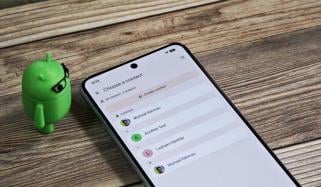
Screen-Time is named the biggest concern among new parents, who wants to keep their children away from all-things-bad.
As per HuffPost, American Academy of Paediatrics recommends no screen time for babies under 18-months, while World Health Organisation (WHO) shared that children under two should not have access to screens.
Meanwhile, kids between the age of two to five years should be limited to one-hour screen time.
Theoretically, these rules are quite easy to follow and make perfect sense as there’s no child who needs screen time but many parents find it hard to actually implement these guidelines in their daily life.
As screens have become such a key part of our lives, keeping them completely out of sight is almost impossible.
Parenting being a full-time job, and mobile phones being accessible at all times, its not easy to keep kids shut out completely from something that can cause them harm.
To set more realistic and productive foot forward in minimising negative effects of screen-time, we need to debunk some myth that oversimplify the issue.
Here are some myths that are far from true:
All screen time is dangerous
Despite the harm that screen can cause, they are not poisonous, and children can find a positive way to use the technology.
As per Common Sense Media screen time for children should be divided into four parts.
- Passive: watching videos or mindless scrolling
- Interactive: playing games / doing puzzles
- Communication: Video calls / social media
- Creation: making digital art or music, or coding
Only time limit can help with screen usage
Time moderation should depend on the platform the kids are using and how are they choosing to spend their screen time.
If your child is coding, hours with computers should be completely fine but social media app like TikTok should have 20-minutes limit.
Along with that, monitoring should be the top priority of the parents who have provided their kids with the privilege of screens.
Screen causing only harm to kids
Instead of thinking that screens are only causing damage, more helpful approach could be to think about what kids are not getting when they’re in front of a screen.
The focus of parents should be to fill children days with developmentally appropriate, interactive and physical activities.
Along with that, when it comes to young children’s language development, screens, instead of helping can cause problems.
As children world revolved around the screen, they miss out real life interaction, which eventually slows down their language development.
Adults’ screen use is a separate issue
Children imitate their parents, after a long day one can spend hours on mindlessly scrolling, or use phones during family time, which could send the impression to kids that its something they are allowed to do as well.
Setting boundaries for the whole family could benefit not only the kids but could also help create better family dynamic.












